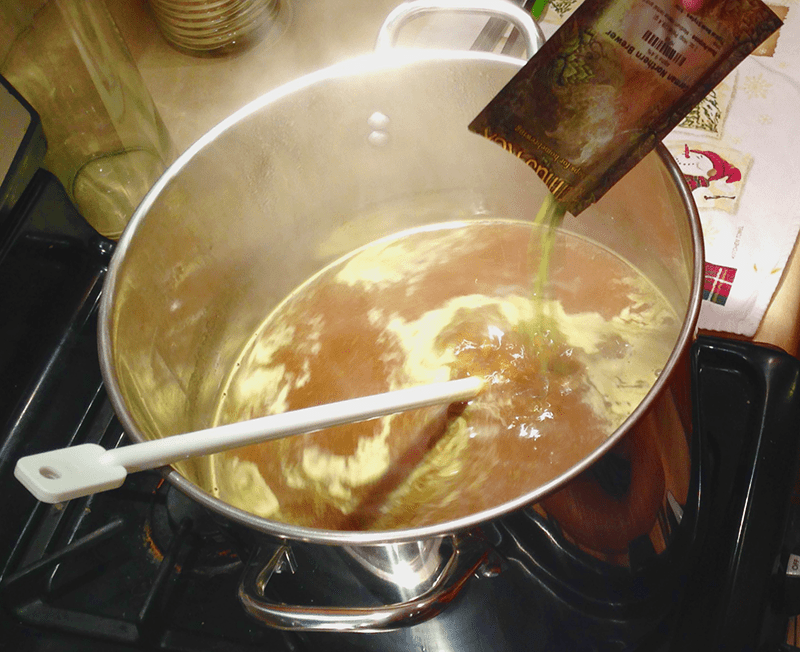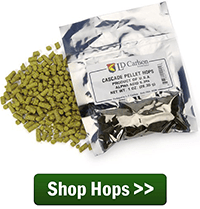 When following a beer recipe, we often find ourselves with hops that don’t quite match up with what the recipe calls for. Either the alpha acid percentage is off, or we can’t get our hands on the right variety of hops – requiring us to make a hop substitution of sorts. So what do we do?
When following a beer recipe, we often find ourselves with hops that don’t quite match up with what the recipe calls for. Either the alpha acid percentage is off, or we can’t get our hands on the right variety of hops – requiring us to make a hop substitution of sorts. So what do we do?
Well, the easiest thing would be to just throw in whatever hops you’ve got and hope for the best, but there are a couple easy ways to make sure that we at least get close to the original beer recipe when substituting.
Substituting Hop Additions for Alpha Acid Content
Since hops are a plant dependent on a number of factors (weather, soil fertility, amount of sunlight, etc.) alpha acid content can change from season to season and from crop to crop. If your beer recipe calls for two ounces of Cascade hops with an alpha acid percentage of 6%, but your Cascades are 8%, how do you adjust the hop addition to make sure you get the same number of IBUs?
An easy solution is to calculate for homebrewing bitterness units (HBUs) or alpha acid units (AAUs):
2 (ounces of hops) * 6 (alpha acid percentage) = 12 HBUs/AAUs
Then just solve for the amount of the hops on hand needed to get the same number of HBUs/AAUs:
X (ounces of hops) * 8 (alpha acid percentage) = 12 HBUs/AAUs
X = 1.5
Substitute 1.5 ounces of your Cascade hops for the 2 ounces called for in the beer recipe, adding the hops to the kettle at the same time as originally called for. (Note: HBUs and AAUs are not the same as IBUs, but they will help to make sure the IBUs of your beer are close to what was intended in the recipe.)
Calculating a hop substitution based on HBU’s is easy enough, right? But what if you don’t have the variety of hops that your homebrew recipe calls for?
Making Hop Substitutions for Variety
If you can’t get your hands on the variety of hops that are called for in the recipe, it just takes a little research to figure out a good possible hop substitution. The HopUnion listing of hop varieties offers suggested hop variety substitutions for most, if not all of the hops on the market.
 You can also consult a hop acid chart to find hops with similar qualities. The top half of the chart is for flavor and aroma oils, whereas the bottom shows the typical alpha acid content, which affects bitterness. As you can see, Columbus, Chinook, and Northern Brewer are similar in the flavor and aroma department, but they differ when it comes to alpha acid content. To maintain IBUs, you can use the HBU/AAU calculation method above.
You can also consult a hop acid chart to find hops with similar qualities. The top half of the chart is for flavor and aroma oils, whereas the bottom shows the typical alpha acid content, which affects bitterness. As you can see, Columbus, Chinook, and Northern Brewer are similar in the flavor and aroma department, but they differ when it comes to alpha acid content. To maintain IBUs, you can use the HBU/AAU calculation method above.
Conclusion
Homebrewing isn’t a perfect science – far from it. But with some research, good technique such as hop substitutions, and some tricks up your sleeve, you can brew consistently good beer batch after batch.
—–
David Ackley is a beer writer, brewer, and self-described “craft beer crusader.” He holds a General Certificate in Brewing from the Institute of Brewing and Distilling and is founder and editor of the Local Beer Blog.
